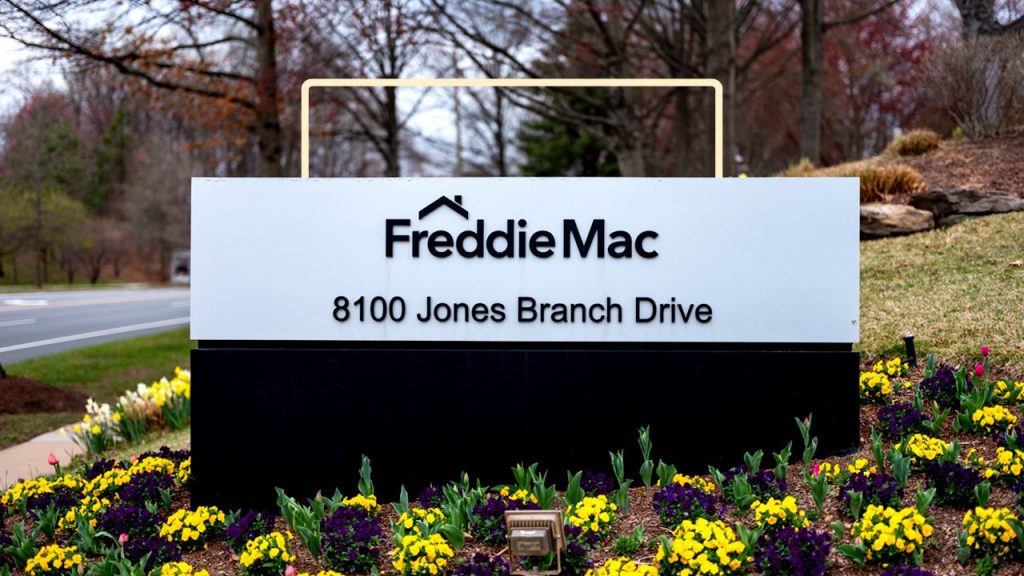Key takeaways
- Mortgages backed by the government-sponsored enterprises Fannie Mae and Freddie Mac are the most prominent type of home loans in the U.S.
- Both formerly private entities were put into conservatorship under the Federal Housing Finance Agency after losing billions in 2008.
- But now, both have returned to solvency and, in fact, have become quite profitable. Is it time to release them?
There has been a lot of talk recently about the Trump administration potentially releasing Fannie Mae and Freddie Mac from the government conservatorship they’ve been held in for the past 17 years. While neither entity makes loans directly to homebuyers or real estate investors, they play a critical role in the mortgage industry, and the implications of a potential release from conservatorship are enormous for the housing market. It’s important to understand what all of this might mean for anyone looking to buy a home using a mortgage.
Fannie Mae and Freddie Mac’s roles in the housing market
Fannie Mae and Freddie Mac were created to make homeownership more attainable for more Americans. Fannie Mae was chartered by the U.S. government in 1938, and Freddie Mac in 1970, to “help ensure a reliable and affordable supply of mortgage funds throughout the country,” according to the Federal Housing Finance Agency (FHFA). These two government-sponsored enterprises, or GSEs, play a crucial role in the mortgage industry: They provide liquidity and access to capital to banks and lenders that make mortgage loans to homebuyers.
Fannie and Freddie set the standards for underwriting conventional mortgages.
— Brent Ivinson
President, Ideal Home Loans
The way they do this is fairly straightforward: Fannie Mae and Freddie Mac buy mortgages from lenders to either hold in their portfolios or bundle into mortgage-backed securities (MBSs) that are sold to large banks or investors. Mortgage lenders then use the cash they receive from the GSEs to make new loans. This process ensures that lenders have an affordable, available supply of money to lend.
They also play two other important roles: “Fannie and Freddie set the standards for underwriting conventional mortgages,” says Brent Ivinson, president of Ideal Home Loans in Colorado. Ivinson says this gives lenders clear and consistent guidelines for originating and servicing a loan, which ensures loan quality, removes some uncertainty for borrowers and makes the loans more attractive to investors when packaged into MBSs.
Ed Delgado, managing director of Mortgage Policy Advisors, a strategic advisory firm, agrees: “The standards established by Fannie Mae and Freddie Mac allow lenders to offer homeownership to those that qualify for a conventional loan at a lower level of risk than loans geared more toward first-time homebuyers and borrowers who have lower credit performance.” In other words, the GSEs set quality standards that lenders must meet in order to sell their loans to them, making these the least risky loans on the market. They are also the most prominent type of loans: Fannie and Freddie are involved in about 70 percent of today’s mortgage market.
The other role Fannie Mae and Freddie Mac play is to help stabilize the mortgage market during difficult times. They do this in part by continuing to buy loans and provide capital at times when institutional investors may be withdrawing from the market. They also leverage their status as GSEs by using the federal government as a sort of safety net: Loans held or bundled into securities by Fannie and Freddie come with an explicit guarantee from the government, making them a virtually risk-free opportunity for investors.
Ironically, it’s this role — keeping the market stable during tough times — that led to the government conservatorship in the first place.
Government conservatorship: How did we get here?
Under a conservatorship, a person or entity is appointed to establish oversight of a troubled company in order to return it to health. In this case, the FHFA became the conservator of the GSEs in September 2008, essentially putting both companies under government control.
The state of the housing market back in 2008, with home prices plummeting and millions of homes in foreclosure, helps explain why Fannie Mae and Freddie Mac were taken over: Many of the billions of dollars of loans they’d purchased were in default, or were collateralized by properties with rapidly declining values. Fannie Mae reported losses of almost $59 billion in 2008, while Freddie Mac lost over $50 billion.
Fannie Mae reported losses of close to $59 billion in 2008, the year it was put into conservatorship. In 2025, it reported a net income of more than $3.5 billion in the first quarter alone.
These losses, and the fear of even higher potential losses in the future, effectively made the GSEs insolvent. So the government stepped in to, per the FHFA, “preserve and conserve their assets and property and restore them to a sound and solvent condition so they can continue to fulfill their statutory missions.”
As home prices recovered — slowly at first, then dramatically during the post-COVID boom — and foreclosure activity plummeted, the GSEs did in fact become solvent again. Then, they became highly profitable: Fannie Mae reported $3.7 billion in net income in the first quarter of 2025 alone, and an overall net worth of over $98 billion, while Freddie Mac reported $2.8 billion and a net worth of $62 billion.
This begs the question: Do the entities still need to be in conservatorship? Or is it time to release them and let them once again become private companies?
Pros and cons of releasing the GSEs from conservatorship
Despite rate fluctuations, the mortgage market — particularly the loans secured by Fannie Mae and Freddie Mac — has enjoyed a period of stability since exiting the Great Recession. Delinquency and foreclosure rates are lower than historical averages, loans are readily available to qualified borrowers and there appears to be no shortage of capital available for lenders to use. So why risk upsetting the apple cart by releasing the GSEs?
Potential pros
- Removing trillions of dollars of liability from the government books
- Reducing the government’s deficit
- Encouraging innovation in the mortgage industry
Delgado thinks a driving force is the Trump administration’s desire to reduce federal liability.
“They want to reduce some of the liabilities that the government has, particularly in housing,” Delgado says, adding that releasing the GSEs would lead to “increased competition; you’ll have better utilization and development and exploration of technology; you can streamline the delivery of mortgages. Business can do lots of wonderful things that a government enterprise can’t because it’s too bureaucratic.”
Business can do lots of wonderful things that a government enterprise can’t because it’s too bureaucratic.
— Ed Delgado
Managing Director, Mortgage Policy Advisors
Chris Whalen, CEO of Whalen Global Advisors, believes that the motivation has more to do with Trump’s “big, beautiful bill.”
“Donald Trump wants to cut taxes,” Whalen says. “He wants to institutionalize his earlier tax cuts. He wants to give away some more money, and that could increase the deficit by as much as $2 trillion. And they see releasing Fannie and Freddie as a way to hopefully raise some cash to help pay for all that. If they could go out and raise $300, $400 billion quickly to help plug this hole, then I think that is likely to happen.”
These are some powerful arguments. So, what’s the catch?
Potential cons
- Mortgage rates would go up
- Home sales and refinances would decline
- Mortgages would become harder for buyers to secure
“If you release the GSEs from conservatorship and privatize them, you’re going to see mortgage rates go up,” Ivinson says. Investors, he says, will want to be compensated for the higher risk they’re taking with an investment that’s not backed by the government.
“Investors are going to want a more substantial return on their investment, and this is going to translate into higher rates for the consumer,” Ivinson says.
Whalen concurs, warning that, based on today’s rates, “We’d wind up at 7.5 percent, and we’d see home sales decline even further. There’d be even less refinance activity than there is today. So it’d be a double-barrel hit for housing and mortgages.”
It would be a double-barrel hit for housing and mortgages.
— Chris Whalen
CEO, Whalen Global Advisors
Delgado also worries about losing the stability that the GSEs have helped reestablish since the conservatorship started.
“My biggest fear is a repeat of 2008,” Delgado says. “If you don’t establish clear-cut guidelines and responsibilities — rules, regulations, policies that are enforceable — you will bring back an element of greed and riskier practices, which is what caused the collapse of the housing market. And the GSEs don’t operate like that — they are there to fulfill a mandate as prescribed by the United States Congress.”
In addition, for first-time buyers or borrowers with borderline credit scores, mortgages could be harder to get.
“Part of the benefit of having the federal government involved is that they want to champion homeownership,” Ivinson says. “They want to make sure that homeownership is not just for people with perfect credit. The private market is going to look at it from a pure risk perspective and say, ‘Let’s get rid of these lower-FICO borrowers, because those are the ones that cause us all the risk and all the default. Let’s just don’t do it.’”
Will they or won’t they?
Industry insiders are uncertain whether ending the GSE conservatorship is truly a high priority for an administration with so many other pressing concerns. But there’s a broad consensus that doing anything with Fannie Mae and Freddie Mac must be done thoughtfully, and with great care, since they have such an outsize impact on the mortgage market.
The transition to a post-conservatorship era must be done the right way, with an ample timeline.
— Bob Broeksmit
President & CEO, Mortgage Bankers Association
Bob Broeksmit, president and CEO of the Mortgage Bankers Association, sums it up succinctly: “The GSEs are integral to homeownership and rental housing, and the transition to a post-conservatorship era must be done the right way with an ample timeline. Right now, mortgage rates are still elevated, and affordability remains strained, and any move on GSE release/privatization should ensure there is not an increase in mortgage rates or costs on consumers.”
Why we ask for feedback
Your feedback helps us improve our content and services. It takes less than a minute to
complete.
Your responses are anonymous and will only be used for improving our website.
Help us improve our content
Read the full article here












